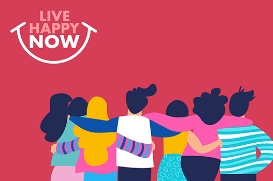In Before Happiness: The 5 Hidden Keys to Achieving Success, Spreading Happiness, and Sustaining Positive Change, Harvard University-trained researcher Shawn Achor builds on his international bestseller, The Happiness Advantage.
In his new book, he identifies ways to positively change your own perception of reality as well as other people’s world, making them not just happier in the moment, but more engaged, more motivated, more alive—permanently. In this condensed excerpt from Before Happiness, which premiered at number two on the New York Times Best Sellers list, Shawn discusses inspiring others to share the happiness you’ve achieved.
Positive inception is not just about spreading happiness but about helping others see the reality in which success (and happiness) is possible. Inception is about better helping others tap into their multiple intelligences and cognitive resources, and thereby to create happier and more successful teams. That involves the mastery of three key strategies.
Strategy 1: Franchise Success. The first step in creating a positive inception is to identify one aspect of a reality—yours or someone else’s—that, if replicated, would help other people harness their drive, motivation and multiple intelligences and become more successful. Research shows that to be contagious, these “success franchises” must be based upon a simple, easy-to-replicate idea.
Strategy 2: Rewrite the Social Script. Every aspect of our work and home life is guided by hidden social scripts. But certain social scripts wield more influence on our collective behavior than others. Social psychologists have found that the more positive one’s social script, the greater one’s ability to create positive social influence.
Strategy 3: Create a Shared Narrative. Finally, for positive inception to occur, you need to appeal not just to reason but to emotion. One of the best ways to plant a positive reality is to construct a narrative around some shared emotional experience, positive or negative. Interestingly, my research shows that creating a shared narrative around past adversity or failure is one of the best techniques for creating positive inception.
The goal is to help you transfer your most valuable reality to your teams, colleagues, friends and family. In doing so, you will create a renewable, sustainable source of positive energy that motivates, energizes and summons the collective multiple intelligences of those around you. Without inception, our own reality becomes less stable.
Strategy 1: Franchise Success (Make it contagious)
What is a success franchise?
“Success franchising” is the technique of getting others to replicate a positive cognitive or behavioral pattern that continually leads to success. Any success that can be observed can also be repeated.
We all have patterns in our lives, but the key is to create and repeat patterns or behaviors that continually lead to success. This principle sounds obvious, yet we choose the wrong realities to replicate all the time. Until we learn how to replicate our positive reality, we will be forced to waste valuable resources trying to reinvent the wheel each time. If we want to be successful, we need to learn not only how to replicate our own most valuable reality but how to spread it.
When we look around, it seems that we are all unique individuals with different personalities, thought patterns, beliefs, values and learning styles. And while this is technically true, it misses an important point. Our personalities may be distinct and unique, but our brains are highly interconnected; they are linked on a wireless mirror neuron network. Mirror neurons, as readers of The Happiness Advantage may remember, are those receptors in our brains that cause us to unconsciously mimic the actions of those around us. But mirror neurons are so key to positive inception because our thoughts and perceptions are what dictate our nonverbal actions. Researcher Paul Marsden at the University of Sussex wrote a great review of this research showing that not only yawns and smiles are contagious but also emotions like stress, anxiety, optimism, confidence, boredom and engagement. Thanks to our mirror neuron network, we are hardwired for inception.
Perhaps my favorite example of social contagion is the Dancing Plague of 1518. According to reports, it began when a woman in Strasbourg, France, started dancing in the streets and could not stop. Eventually she collapsed from exhaustion. At first people thought she had had a psychotic episode and that was the end of it. But then she started dancing again. In the next few days, thirty other people also experienced this same uncontrollable need to spastically dance. The authorities had to get involved because four hundred villagers were compulsively dancing day and night… and not out of joy, either. This was manic, desperate dancing, resulting in heart attacks and, incredibly, deaths.
Such stories show how easy it is for us to “catch” the mindset of even a single person. But people rarely talk about the positive contagions that have occurred throughout time: mass decisions to abolish slavery, global declines in smoking rates or widespread nonviolence movements in India or Egypt. Positive outbreaks also begin with a single dancer. You have the power to franchise positive habits in your home or workplace.
Strategy 2: Rewrite the Social Script (Make it positive)
No one has ever had to tell you that you mustn’t lie down in elevators or pluck a french fry off a stranger’s plate. These unwritten rules that govern our social interactions are known as social scripts. To be sure, social scripts play a valuable role in our society. The problem arises when these scripts infect us with negative realities that lessen our likelihood of success. That’s why the second technique for creating positive inception is finding ways to rewrite the social scripts.
Three Men Make a Tiger
According to psychology researcher Bibb Latané from Columbia University, every social script has three components: the strength of the message (S), the immediacy (I) and the number of sources (N). So the degree of social influence a script exerts is determined by the following equation: S + I + N = Social Influence. The stronger and more important the message is, and the more people delivering it, the more influence it will have.
When I was in divinity school, I studied Buddhist and Confucian thinking. One of my favorite Chinese proverbs was “Three men make a tiger.” The story behind it went something like this:
On a starless night, four men are sitting quietly. All of a sudden, a wild pig runs past, knocks over one of the men, and escapes into the night. The fallen man yells, “Tiger!” Two of the other men, panicked, also yell “Tiger!” As a result, the whole village awakes, and chaos erupts, as the three men tell the harrowing story of the tiger attack. A hunting party is created to rid the village of the terror. The pig, calm now, watches impassively from the trees as the villagers begin to build wooden fences and worried mothers keep their children inside their huts until the “tiger” can be killed. The (false) reality of a tiger on the loose has come to dominate the social rules of the village.
Sometimes, depending on the cultural norms in your family or at your company, it can be difficult to increase the strength of a positive message without being written off or ostracized. And it is hard to increase the immediacy without sounding hysterical or shrill. So the best approach is to increase the N, the number of people buying into the positive message. Like a politician securing his or her base, focus on the low-hanging fruit—the like-minded, positive people—first. Once you have increased the N, you will have more influence over the middle-of-the-road group. Then once you have planted the seeds of positive change in both those groups, you can work on the most intractably negative people. Many people identify the most negative people and then throw all of their energy and resources into trying to get them to see more positives. That is a doomed strategy. It’s far better to first find people who are more likely to tip to positive; only then, once you have increased your social influence, should you go after the cynics.
Change your face
When it comes to social interactions, many individuals forget how big a role facial expressions play in transferring our realities. Worse, they often fail to realize when their face is communicating the complete opposite of what they actually feel or believe.
I cannot tell you how many times I’ve looked out at a member of an audience who looked as if he were just hating my talk, then had him come up afterwards and, with the same sour expression, tell me that the talk was life changing. It’s as if we were all walking around talking in a foreign language that no one understood.
A simple but incredibly powerful way to ensure that your nonverbals are positive is one that I learned from a manager. Here’s the secret: take a look at the person talking to you. Thanks to our neural network, we unconsciously mirror the people we are with. So if the person you are talking to is not smiling, seems fatigued or disengaged, or seems anxious, chances are your nonverbals are not as positive as they need to be. If you don’t like what you are seeing, change yourself first and see if the other person follows the new script.
Change your Script from Tragedy to Comedy
The best script writers are those who write comedies, not tragedies. Humor wields more social influence—and is therefore more effective in creating positive inception.
Humor is attractive because it is a signal of cognitive fitness. Your brain must be flexible, quick and sharp to comprehend or create humor. You could say that humor is a marker of an individual’s ability to add vantage points.
But what is it that causes people to find humor in some realities when others find only irritation or embarrassment? Not surprisingly, the answer lies in positive genius. Psychologist Barbara Fredrickson’s “broaden and build theory” suggests that experiencing positive emotions expands people’s momentary “thought-action repertoires,” those paths to using our intellectual resources in the most productive way. That’s a fancy way of saying that your perception of reality determines your actions: if you see a path to a positive reality, your brain will be quicker to see humor in negative events. Thus, when you have a negative external world at work, you can use humor as a strategic tool to help others see a more positive reality.
Strategy 3: Create a Shared Narrative (Make it Meaningful)
There are few projects I’ve felt more proud of than getting to lead the Everyday Matters campaign. This is a joint partnership between the National MS Society and the forward-thinking biomedical giant Genzyme to create a happiness movement for people diagnosed with multiple sclerosis. This illness literally tears apart your brain’s ability to communicate effectively with the nerves in your body, resulting in recurring bouts of bone-deep weariness, pain and paralysis.
Enter the champions: 1,200 brave individuals dealing with the physical, emotional and social challenges of MS applied to be part of a program in which they would use some of the techniques from my last book, The Happiness Advantage, to improve their coping skills and even reduce their symptoms. Then, from this large group, we chose five individuals who would become our champions of inception. We didn’t select these people because they were the happiest, but rather because their stories would show the rest of the MS Society and the world that happiness is a choice. We spent a weekend going through positive psychology findings and laying out a plan for their next few months with their happiness coach, Michelle Clos, who also has MS. From June to October, they were filmed by Kristen Adams, an Emmy Award-winning TV producer (who also has MS), and the film was shown to the rest of the society.
I could have spoken to those 1,200 brave MS patients for hours about the science of happiness, and it wouldn’t have had nearly the effect of those videos on the website (everydayMSmatters.org). That’s because to better plant the seeds of a positive reality in a group of people who are confronting a certain challenging experience, you need an emotional narrative delivered by individuals who share that experience.
Creating a shared, positive experience
If you are successful at creating a positive reality but incapable of sharing it with others, then that reality will be limited and short-lived. But by utilizing the techniques of positive inception you can create a renewable source of positive energy for you and the people around you.
We have discussed the three big keys to positive inception: franchising, script writing, and creating a shared narrative. The key to mastering them, though, is to let go of the myth that you cannot change other people. We can change people, but only by planting the seeds of a more positive reality. So remember, if you want to successfully transfer your positive reality, you must make that reality contagious, influential and meaningful. Once you have done that, you have become a master mental architect, capable not only of creating positive genius but of spreading it on a massive scale.
The farther and wider you spread positive genius, the more potential you’ll be able to unleash. Once you have amplified the collective intelligences of your teams, companies, families, and communities, there is truly no limit to what you can achieve.
Reprinted from the book Before Happiness: The 5 Hidden Keys to Achieving Success, Spreading Happiness, and Sustaining Positive Change by Shawn Achor. Copyright 2013 by Crown Business, an imprint of the Crown Publishing Group, a division of Random House LLC, a Penguin Random House Company.
















